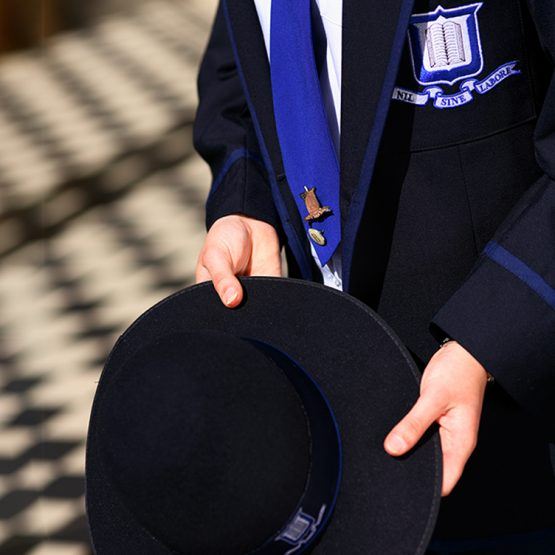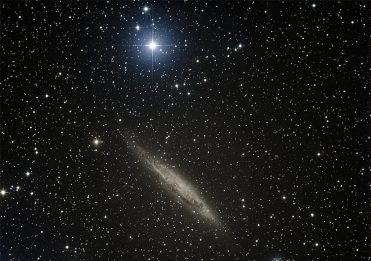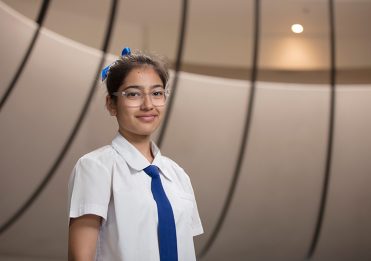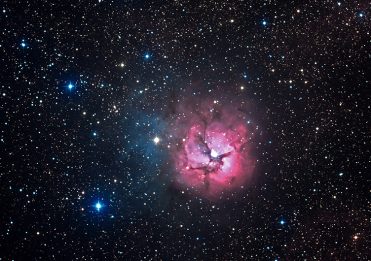One of the most important photographs in history was taken in December of 1995, not by an individual person, but by a telescope. The National Aeronautics and Space Administration’s (NASA) Hubble telescope had been orbiting the Earth for five years when a group of astronomers decided to point it at a very small and seemingly uninteresting patch of the northern hemisphere sky. They were not expecting to see an astonishing collection of more than 3 000 entire galaxies, each comprising billions of individual stars, all in an area of sky smaller than the tip of a fingernail held at arm’s length. This incredible photograph, the Hubble Deep Field image, changed our view of the universe as a cold, empty expanse and led us to an understanding of the richness and abundance of the cosmos.
Astronomy has the ability to be astonishing and, with the recent launch of the Dorothy Hill Observatory at the Marrapatta Memorial Outdoor Education Centre, Brisbane Girls Grammar School has the extraordinary opportunity to share this wonderful branch of Science with students in myriad novel and exciting ways.
Optical telescopes collect light from the sky and focus this light into a person’s eye or onto a camera. The three main types of optical telescopes achieve this in different ways. Reflecting telescopes use mirrors to reflect light to the eye, refracting telescopes use lenses to bend light toward the eye and catadioptric telescopes use a combination of both mirrors and lenses. Each type of telescope design comes with benefits and drawbacks that make it suitable for observing particular objects in space. The Dorothy Hill Observatory takes advantage of all three designs, as well as a wide array of cameras, filters, imaging software and computer-controlled mounts, to collect a broad range of images and astrometric data that will deepen Grammar girls’ understanding of the universe.
Telescopic observation will be built into the Science curriculum beginning in Year 7. Students will first be introduced to the 280mm catadioptric telescope, which can produce crisp, bright images in relatively short timeframes. Watching from their laptops at home, students will be led by their Science teacher through a live-cast ‘tour of the sky ’ as an introduction to the field of astronomy. In class, students will learn how to send instructions to the robotic telescopes and how to use image processing software to manipulate the data that is sent back to them. This will allow them to produce images of astronomical objects, which they will interpret for their teachers and classmates.
Year 8 will see the classwork increase in complexity as students begin to understand how the motion of the Earth affects what we see in the sky. Students will use the observatory’s all-sky camera to produce time-lapse star trail images that show how the motion of stars over the course of an evening is related to the rotation of the Earth on its axis. They will also learn how Earth’s revolution around the sun results in some astronomical objects only coming into our sky for a few months out of the year. This curriculum will be delivered in a dedicated, term-long Astronomy unit at the end of Year 8.
In Year 9, the curriculum will broaden the girls’ horizons even further. The 102mm refracting telescope and the 356mm reflecting telescope with its colour filters and high-quality charge-coupled device (CCD), can be used to produce exceptional images of deep sky objects, including nebulae, globular clusters, galaxies, and supernova remnants. More sophisticated image processing techniques and more refined scientific understanding of astronomical phenomena will be required for this work.
In Year 10 Physics, the data gathered from the observatory will move beyond photographs, as the many filters on the 356mm reflecting telescope will allow the students to map the chemical properties of stellar nurseries and determine the temperature of stars. The period of revolution for Jupiter’s largest moons will be measured and used to support Kepler’s Third Law as part of the new Queensland Curriculum and Assessment Authority Senior Physics Syllabus. Senior students in the Astronomy Club will use the observatory for long-term projects that will gather publishable data of interest to the wider scientific community.
We are excited to share the use of this amazing new facility with our international affiliate schools in Japan, Germany, France and China, who in the future will have the opportunity to explore the southern hemisphere sky from their northern hemisphere classrooms. Partnerships with other astronomers and astrophotographers at the Astronomical Association of Queensland, University of Southern Queensland and Edith Cowan University have already commenced. We will also offer training and telescope time to local primary school teachers, so they can begin inspiring their own cohorts of future-generation stargazers.
Brisbane Girls Grammar School’s Dorothy Hill Observatory is a ground-breaking, highly innovative educational opportunity for the School and the Science curriculum. We, in the Science Faculty, are eager for the challenges and opportunities that our new observatory will bring and we cannot wait to see our students’ experiments move out of the classroom and into the wider universe.




